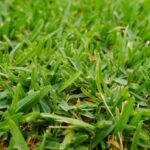In the summer, all homeowners need to take care of their lawns to ensure that they can have a scenic garden. The warm sun and scorching temperatures can wreak havoc on your green and vibrant lawn. Grass require special care in high heat, like all plants, but most homeowners neglect it. If you are wondering how to care for grass in summer, here is a guide to ensure you see the best greenery from your window this summer. We have discussed ten key strategies to ensure your lawn thrives during the hot summer.
Ways to Care for Grass in Summer
Here are a few effective ways to care for your garden in the summer:
- Deep watering
Many people spray the lawn with water and think it is sufficient. The way you water the grass plays a crucial role in its liveliness and greenery. Even if you frequently spray the grass, shallow watering will encourage shallow root growth. This kind of growth means that the grass cannot withstand drought and heat stress.
Instead of spraying, water the grass deeply, even if it means the frequency is lower. If you water for up to half an hour at less frequent intervals, the roots will grow deeper, giving grass longer life and resilience against the hot weather. When you start doing this, you will notice that your lawn will remain green for longer, and the grass will not dry within a few days due to its deep roots.
- Proper Mowing
Homeowners and gardeners must know the optimum height for lawn mowing. If you think gardeners keep the optimum height for aesthetic purposes, that is not so.
Cutting the grass at a height will impact your lawn’s health during the summer. If you want to keep your lawn grass short, the grass shaft will lose moisture sooner, and the roots will not get shade from the sun. The exposed roots can become dry very fast. The shaded roots remain moist and become stronger as they receive optimum water levels and shade. Moreover, taller grass blades promote deeper root growth, further enhancing the lawn’s resilience.
- Leave the Clippings
Many gardeners pick up the cut grass and throw it away. We recommend that you leave grass clippings on the lawn. This cut grass is a rich source of fertilizer for the grass. As the clippings decompose, much of the nutrition returns to the soil, strengthening the roots further. Grass require special care in high heat, and this action will save you time fertilizing the soil, and the clippings will ensure that the green grass becomes stronger and long-lasting.
- Use Slow-Release Fertilization
Imagine feeding high-potency fertilizer to your lawn. This fertilizer can cause the grass to ‘burn’ or deteriorate due to its highly potent environment. Slow-release fertilizers gradually nourish the grass, ensuring a greener lawn during the summer season. Summer heat can burn the grass, and if you add fertilizers, the process will accelerate.
- Keep the Lawn Soil Aerated
You may have seen gardeners aerating the soil but puncturing the soil and allowing air to circulate in the top layer. This action offers significant benefits. Aeration improves water and nutrient absorption by allowing these essential elements to penetrate deeper into the soil and reach the root zone more effectively. This promotes deeper root growth and overall lawn health, especially during summer when water and nutrients are crucial for survival. Since grass require special care in high heat, you can keep the soil well-aerated to keep the grass healthier during the hot months.
- Remove Thatch Buildup
The layer of dead stems in the grass can obstruct growth and make your lawn look pale instead of lush green. This layer is called thatch. Organic debris accumulating between the blades and the soil surface must be removed to ensure better growth and proper use of soil nutrients. Removing thatch will ensure greener lawns as you remove weeds from the grass.
- Keep Pests Away from Grass
Summer heat makes your lawn weaker, and you will notice that the grass blades will get weaker. However, if you ensure that your grass remains pest-free and fresh, the greenery will last longer. Regularly inspect your lawn for signs of trouble, such as discoloration, wilting, or unusual insect activity. Early detection and treatment are crucial to your lawn’s health and can maintain the look through the summer months.
- Cover it Up
If you have noticed some homeowners cover their lawns in the summer, you might’ve wondered why this is done. However, this cover is a good idea if you want your lawn to remain green. Providing shade for your lawn is an excellent way to reduce the impact of summer heat.
Planting trees or installing shade structures strategically around your lawn can significantly lower the amount of direct sunlight reaching the grass. Your lawn will remain shaded, so you will not have to worry about the grass getting yellow. Moreover, the covers keep the grass moist.
- Consider Your Options According to Location
If you live in a hot area, you should consider planting a drought-resistant grass seed or sod. These grass varieties are modified and genetically resilient, so you will see your lawn greener and more refreshing to look at. These grass varieties will be beneficial because they require less frequent watering than traditional grass types. Getting a suitable grass variety reduces the amount of water your lawn needs to survive the summer heat but also conserves water, a valuable resource in hot regions.
- Utilize Soil Moisture Sensors
Soil moisture sensors are an excellent tool for assessing the amount of moisture in the soil. This tool will help homeowners and gardeners understand the moisture level in the soil and can be used to determine when and how much to water. Utilizing soil moisture sensors prevents overwatering, a common mistake that can damage your lawn and wastewater. This promotes responsible water usage and ensures your lawn receives the correct moisture to thrive throughout the summer.
Last Words
Grass require special care in high heat, and it can be a challenge if you do not know how to care for your lawn during the hot summers. We have discussed different ways to keep your grass green in the summer. We all want to see our lawns thrive, but it is difficult during the hot months. All the strategies discussed above will help you keep your lawn looking fresh and appealing all year long.







